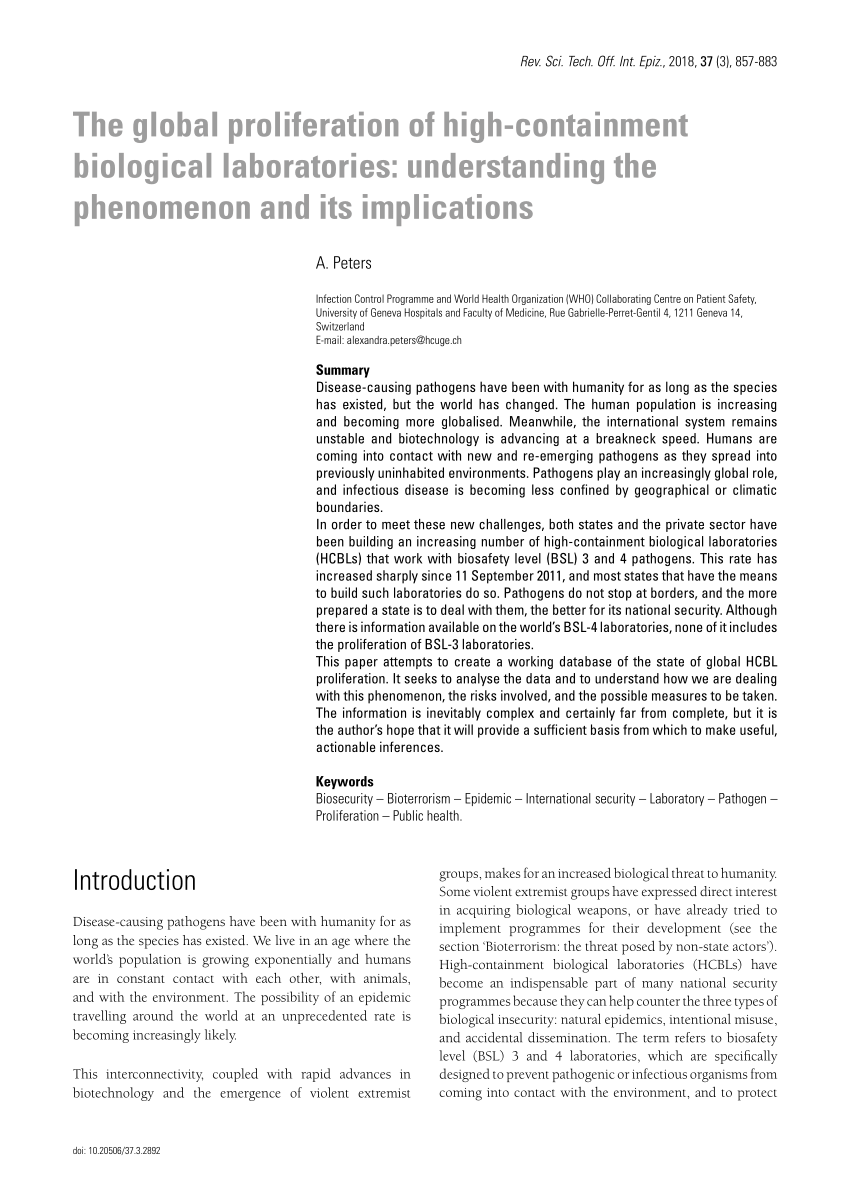Disease-causing pathogens have been with humanity for as long as the species has existed, but the world has changed. The human population is increasing and becoming more globalised. Meanwhile, the international system remains unstable and biotechnology is advancing at a breakneck speed. Humans are coming into contact with new and re-emerging pathogens as they spread into previously uninhabited environments. Pathogens play an increasingly global role, and infectious disease is becoming less confined by geographical or climatic boundaries. In order to meet these new challenges, both states and the private sector have been building an increasing number of high-containment biological laboratories (HCBLs) that work with biosafety level (BSL) 3 and 4 pathogens. This rate has increased sharply since 11 September 2011, and most states that have the means to build such laboratories do so. Pathogens do not stop at borders, and the more prepared a state is to deal with them, the better for its national security. Although there is information available on the world's BSL-4 laboratories, none of it includes the proliferation of BSL-3 laboratories. This paper attempts to create a working database of the state of global HCBL proliferation. It seeks to analyse the data and to understand how we are dealing with this phenomenon, the risks involved, and the possible measures to be taken. The information is inevitably complex and certainly far from complete, but it is the author's hope that it will provide a sufficient basis from which to make useful, actionable inferences.

 www.researchgate.net
www.researchgate.net

(PDF) The global proliferation of high-containment biological laboratories: understanding the phenomenon and its implications
PDF | Disease-causing pathogens have been with humanity for as long as the species has existed, but the world has changed. The human population is... | Find, read and cite all the research you need on ResearchGate



